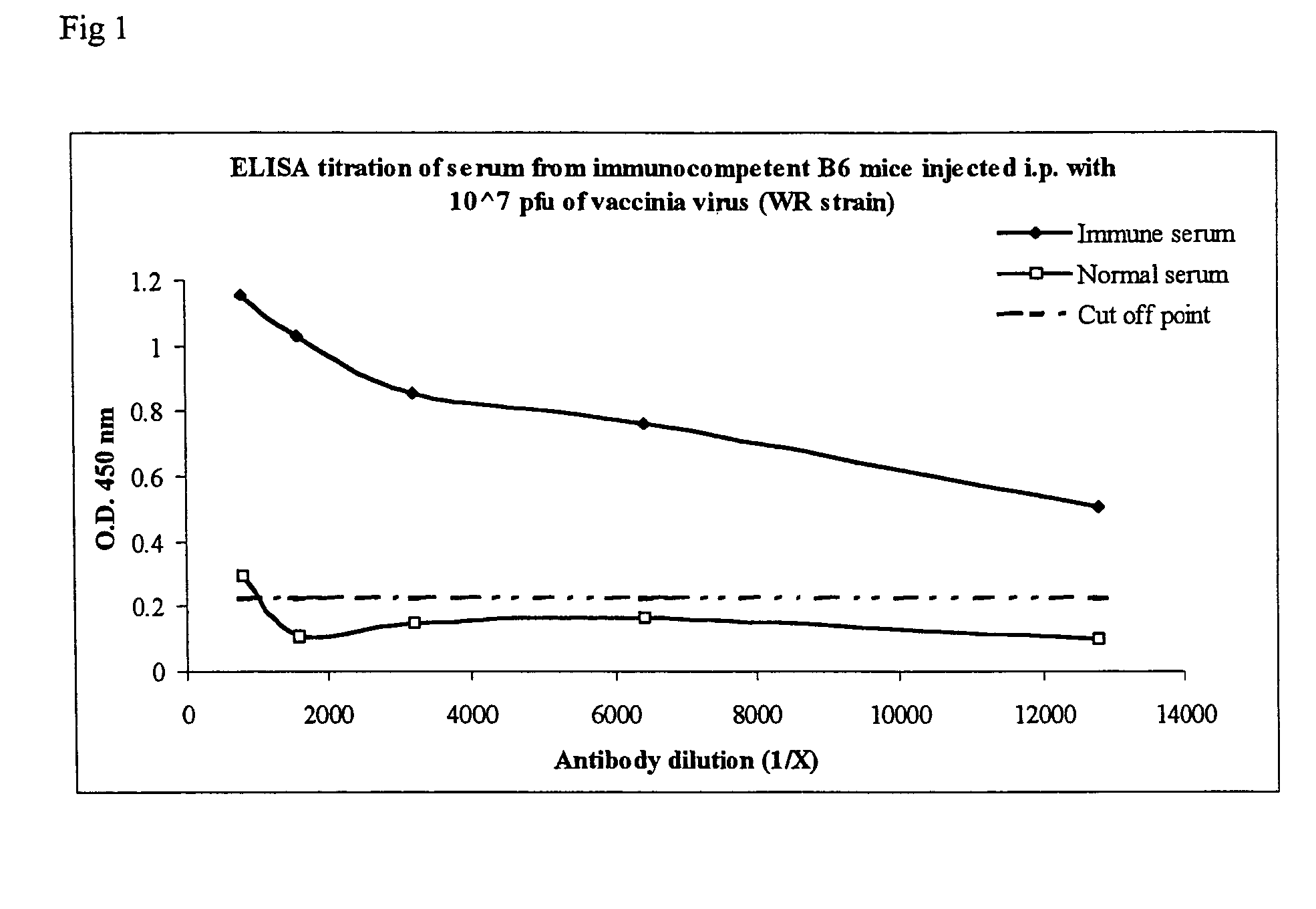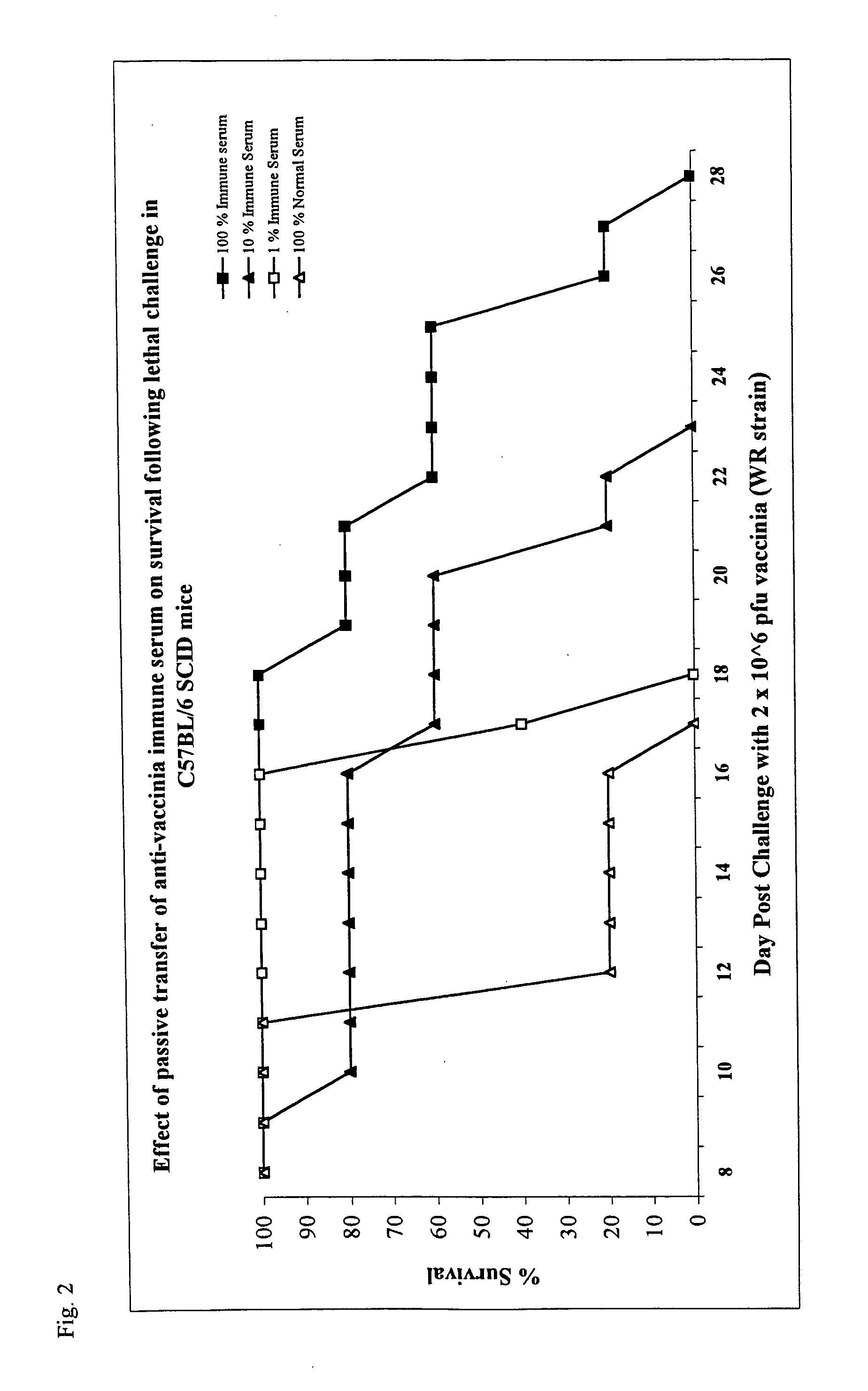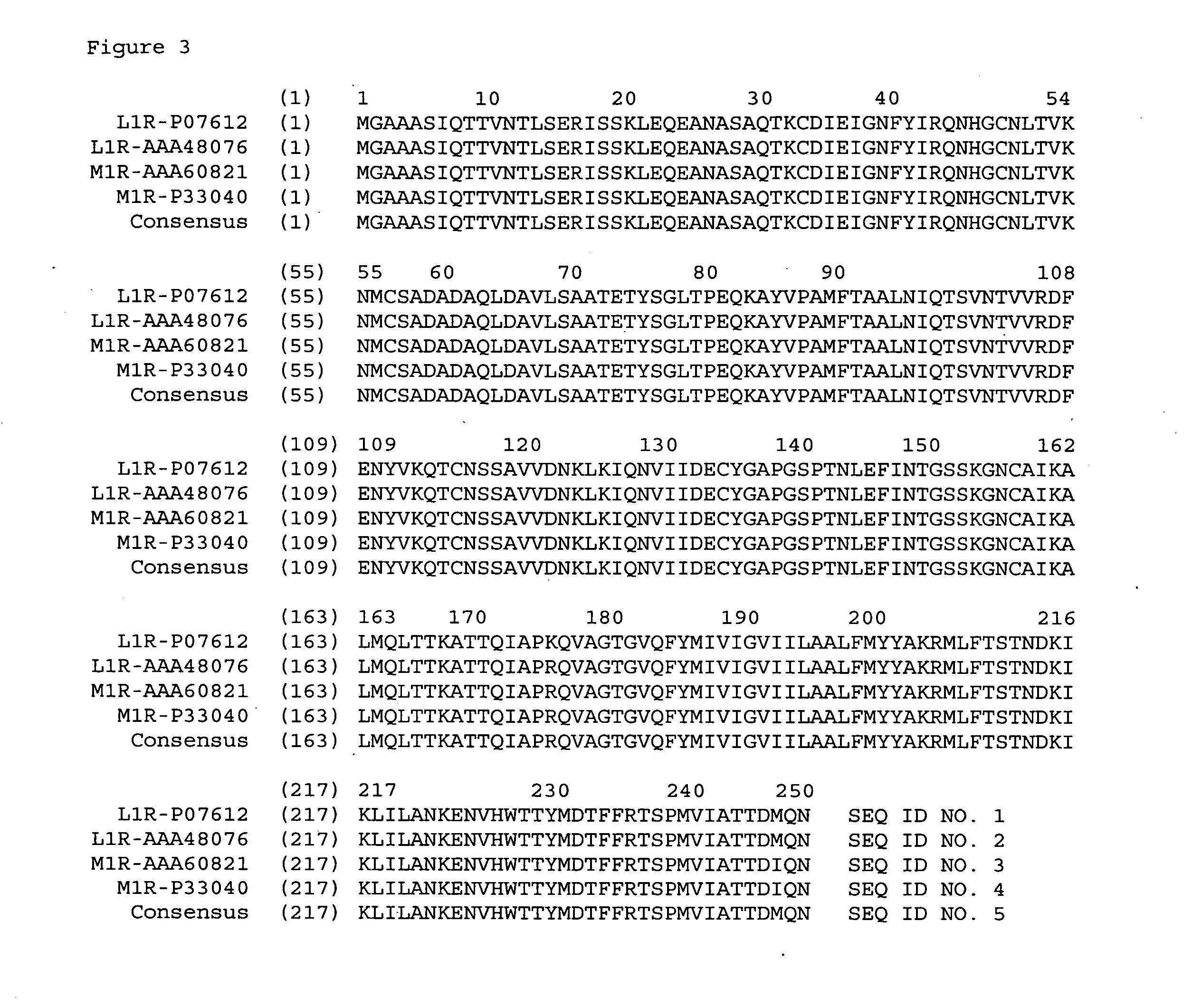Immunogenic compositions derived from poxviruses and methods of using same
a technology of immunogens and compositions, applied in the field of immunogen compositions and methods, can solve the problems of not being able to accept a high incidence of severe and potentially fatal side effects, unrecognized stocks are retained in laboratories around the world, and most experts today would not endorse the widespread use of traditional vaccine strains
- Summary
- Abstract
- Description
- Claims
- Application Information
AI Technical Summary
Benefits of technology
Problems solved by technology
Method used
Image
Examples
example 1
Antibodies Provide Protection from Vaccinia Infection
[0046] To verify that protection against poxvirus infection is antibody mediated adoptive transfer experiments into SCID (severe combined immunodeficiency) mice exposed to vaccinia virus were carried out. SCID mice lack both B and T cells and are incapable of mounting an antibody or T cell response of their own against a vaccinia virus challenge. Thus any protective effect observed would be due to the ability of the adoptively transferred serum to neutralize the inoculated virus. C57BL / 6 (B6) mice are immunocompetent and able to eliminate low level vaccinia infections. Therefore to generate antisera for adoptive transfer, we infected 10 C57BL / 6 mice with vaccinia virus and 14 days later bled the animals to obtain a high titer antiserum against vaccinia virus (see FIG. 1). Specifically, 1 μl of trypsin (25 mg / ml) was added to each of six 100 μl aliquots of WR strain vaccinia virus (2.5×108 pfu / ml) and incubated in a 37° C. waterba...
example 2
Alignment of Vaccinia Neutralization Targets with Varioloa Major Homologs
[0048] The Entrez Protein databank has multiple entries for each of the target antigens of both viruses. By aligning these sequences differences between vaccinia and variola are readily observed (see FIGS. 3-8). Some pairs are nearly identical. (In the following pairings the vaccinia protein or amino acid residue will always precede the variola major counterpart). For L1R-M1R there are only two positions out of 250 that showed any variation, conservative K-R and M-I substitutions, and the K is reported in only one of the two vaccinia sequences used. Other pairs showed more substantial variation. A27L-A30L showed variation at 7 positions out of 110 though in four cases only one of the four sequences used differed. Moreover some of the substitutions were decidedly non-conservative, for example the R-A substitution at position 30. In a similar manner D8L-F8L varied at 15 of 304 positions. A33R-A36R varied at 11 o...
example 3
Construction of a Polyprotein-encoding Nucleic Acid
[0049] Examination of the sequence of L1R-M1R revealed a likely signal sequence at its N-terminus and hydropathy analysis suggested the existence of a membrane spanning domain beginning around position 187. Taking advantage of its natural signal sequence this protein was chosen as the N-terminal component of the polyprotein, thus insuring transport into the lumen of the endoplasmic reticulum and thereby exposing the polyprotein to glycosylating enzymes. Glycosylation can be important to native antigenicity of membrane proteins. This can also promote secretion into the culture medium, simplifying purification. Because neutralizing antibodies are expected to be directed against the extraviral segment of the protein, and to avoid the protein becoming anchored in the membrane, the amino acids after position 186 were not included in the construct. PCR was carried out using vaccinia strain WR as template. The 5′ primer added and AfIII re...
PUM
| Property | Measurement | Unit |
|---|---|---|
| solubility | aaaaa | aaaaa |
| pH | aaaaa | aaaaa |
| immunogenic composition | aaaaa | aaaaa |
Abstract
Description
Claims
Application Information
 Login to View More
Login to View More - R&D
- Intellectual Property
- Life Sciences
- Materials
- Tech Scout
- Unparalleled Data Quality
- Higher Quality Content
- 60% Fewer Hallucinations
Browse by: Latest US Patents, China's latest patents, Technical Efficacy Thesaurus, Application Domain, Technology Topic, Popular Technical Reports.
© 2025 PatSnap. All rights reserved.Legal|Privacy policy|Modern Slavery Act Transparency Statement|Sitemap|About US| Contact US: help@patsnap.com



